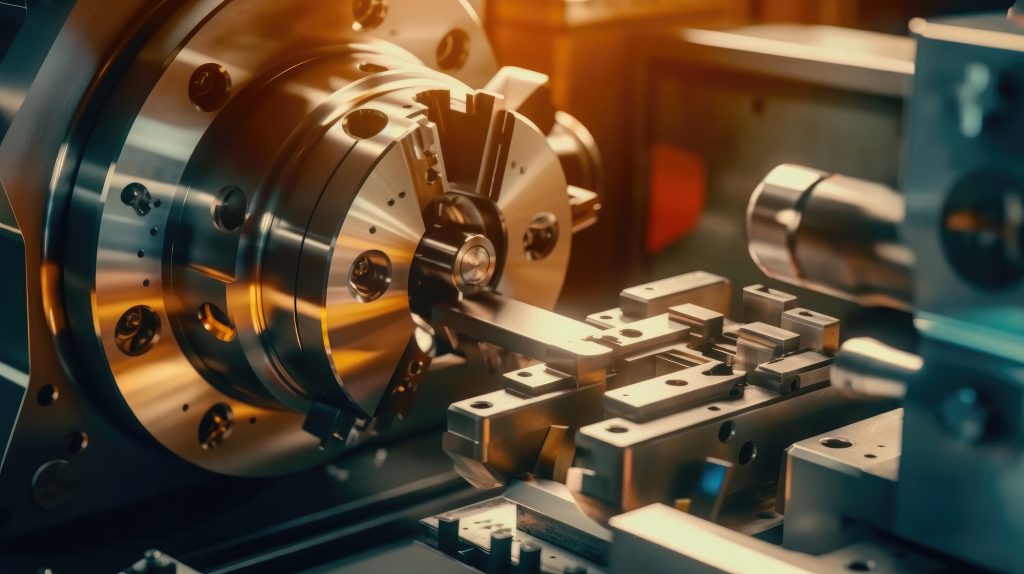
Have you ever wondered about the unseen components powering your devices or machinery? These are precision parts, miniature marvels of engineering that, though small, have a significant impact across numerous fields.
But what exactly are these precision parts? They are components crafted to meticulous standards, ensuring accuracy down to fractions of a millimetre. In industries ranging from medicine to automotive, these parts play a crucial role in the functioning of our machines.
Why should businesses pay attention to them, you might ask? The benefits of using precision parts are vast and diverse. They enhance operational efficiency, reduce downtime, and can even prove cost-effective in the long run.
Read on to learn more about these fascinating components and their role in driving business success.
The Basics of Precision Parts
Precision parts, though often hidden from view, play a critical role in the operation of many types of machinery and devices. Each part is carefully designed and crafted for a specific function.
Here’s a snapshot of the variety and versatility of precision parts:
- Semiconductor Components: Precision parts are integral to our electronic devices. Microchips and transistors, which regulate electrical current, are manufactured to exact standards to ensure optimum performance.
- Automotive Elements: In vehicles, precision parts, such as gear components and fuel injection nozzles, ensure smooth operation and fuel efficiency.
- Aerospace And Defence Applications: Precision parts in this field can range from the components in navigation systems to the minute parts in missile systems, underlining their importance in safety and security.
These are just a few examples of the many applications of precision parts. They can be found in a wide range of industries, playing a crucial role in their performance. As we explore the manufacturing process, we’ll see how their accuracy and consistency are achieved through careful design and craftsmanship.
The Manufacturing Process of Precision Parts
The creation of precision parts is a complex process that requires careful alignment between design and production. It involves many steps, including the fine-tuned process of silicon and germanium crystal growth for electronic components.
Let’s take a closer look at the steps involved in making precision parts.
- Design Stage: This starts with a blueprint. Engineers use advanced design software to create a 3D model of the part, determining its dimensions and functionality to the minutest detail.
- Manufacturing Stage: Here, machines come into play. Computer Numerical Control (CNC) devices, guided by the design model, meticulously carve the part from the chosen material.
- Quality Control: Every single precision part undergoes stringent checks for accuracy and consistency. Any part that doesn’t meet the set standards is discarded, ensuring only the best make it through.
That’s a simplified overview of how precision parts come to life. Now that we’ve explored the creation process, let’s look at the practical side. How do these precision parts contribute to efficiency and the bottom line in businesses?

The Role of Precision Parts in Business Efficiency
Precision parts are more than just meticulously crafted components. They’re the driving force behind efficient operations in numerous industries. Let’s look at a few ways in which they contribute to business efficiency:
- Reduced Wear And Tear: Precision parts decrease the chances of equipment failure. Their precise design and manufacturing lead to less friction and damage, ensuring your operations run smoothly and consistently.
- Improved Product Quality: With each part performing its function to exact standards, the final product’s quality is enhanced. This leads to satisfied customers and potential growth in market share.
- Increased Productivity: Precision parts streamline operations. Their precise fit and optimal performance help to eliminate bottlenecks, resulting in faster output.
Investing in these components pays off in the short term and over time. Next, we’ll take a closer look at how precision parts provide a financial edge to businesses.
The Financial Perspective: ROI of Precision Parts
Precision parts might seem like a significant investment initially, but their benefits tend to outweigh the costs over time. Here are some financial advantages:
- Lower Maintenance Costs: The durability and accuracy of precision parts can result in fewer maintenance requirements, leading to cost savings.
- Less Operational Downtime: Downtime can be costly. Precision parts can help keep your operations running smoothly and prevent potential lost income.
- Improved Profitability: With enhanced productivity and product quality, your business can see an uptick in profitability.
When viewed from a long-term perspective, precision parts prove to be a worthy investment. They offer an impressive return on investment (ROI), playing a key role in the financial health and success of your business. Now, let’s turn our gaze to the future, looking at the emerging trends and potential impacts.
Precision Parts and the Future
Technology never stands still, and the field of precision parts is no exception. New manufacturing methods and materials are constantly being developed, leading to more efficient and accurate parts.
Innovations like 3D printing and the Internet of Things (IoT) are changing the way these components are produced and used. Such advancements promise to further streamline operations, open new possibilities, and drive businesses forward.
Conclusion
As we’ve seen, precision parts are essential components in a wide range of machinery and devices. Their influence extends beyond their size, enabling superior productivity, product quality, and financial health for businesses.
As we venture into the future, the field of precision parts is ripe with innovation, promising new possibilities. While they may be small, the role they play in business success is significant.
So, as we navigate the evolving business landscape, it’s worth keeping an eye on these crucial components that could be a vital key to unlocking the next level of business efficiency and success.










